#RecipeUpTop (details below):
- Chicken wings, separated into “drumettes” and “flats”
- Salt and sugar for brine (depending on amount of wings);
For the buffalo sauce:
- 1/2 cup Frank’s Red Hot sauce;
- 1 tablespoon Worcestershire sauce;
- 1 tablespoon pickled jalapeno juice (optional);
- 1 teaspoon cayenne (optional);
For the blue cheese dressing:
- 1/2 cup blue cheese (crumbled);
- 1/4 cup mayo;
- 1 cup sour cream;
- Salt (to taste);
- Onion powder (to taste);
- Garlic powder (to taste);
Method: If not already done, separate wings into “drumettes” and “flats” and soak in a 6% brine (both salt and brown sugar) for at least six hours, but up to twenty four. Roast over coals on the grill (or in a 450F oven) until skin is crispy and internal temp exceeds 165F. Toss in sauce and serve immediately.
For the buffalo sauce: combine ingredients and warm, adjusting for spice level with cayenne and jalapeno.
For the blue cheese: combine the ingredients in a mixing bowl and adjust for seasoning. Thin with water to desired consistency.
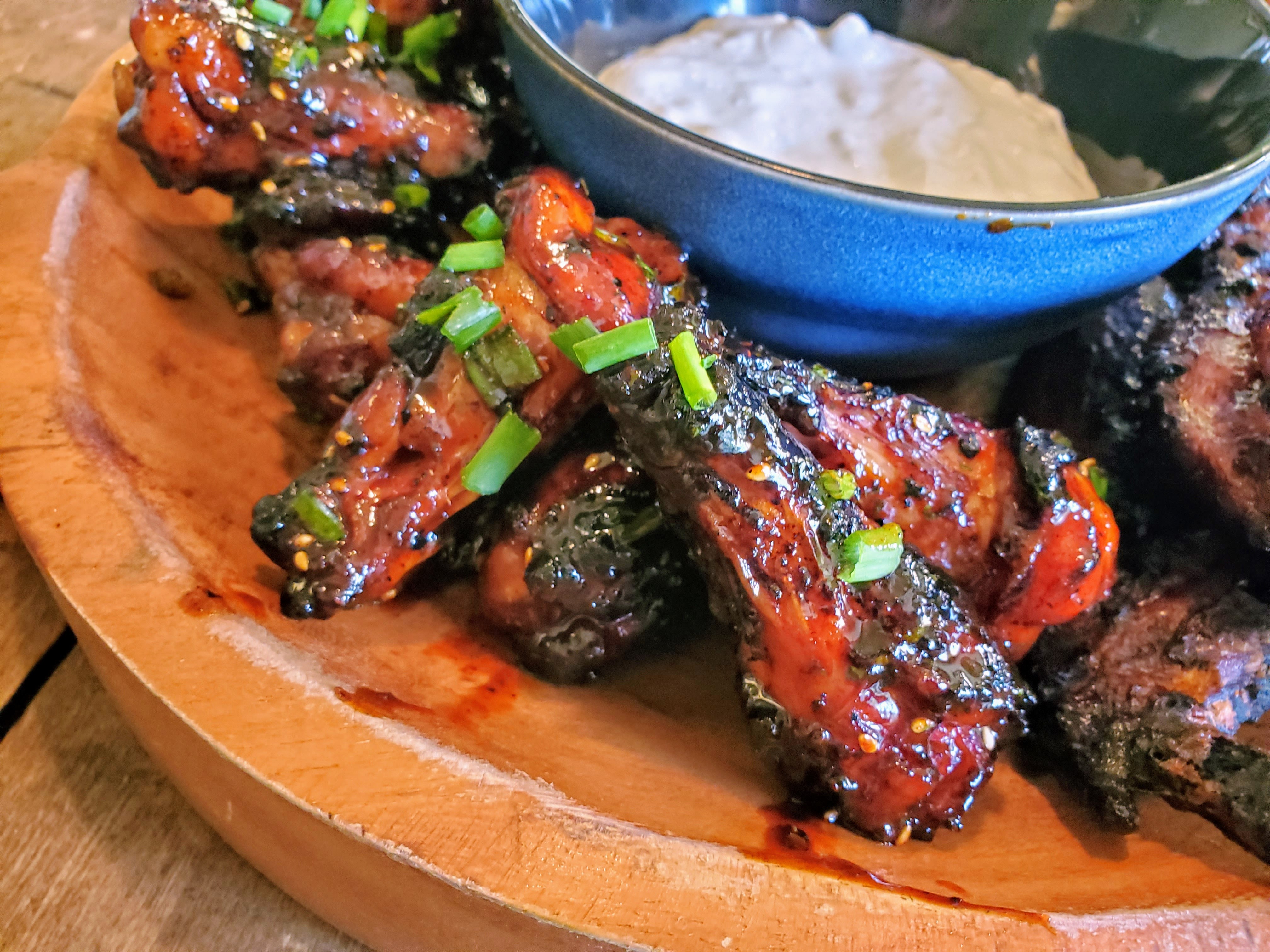
The Details
It’s mid-August here in Maine, and this is my absolute favorite time of the year. There is a magical transition that seems to happen almost overnight, where the angle of the sun shifts slightly, everything starts to look bright and crisp, and the breeze slides from warm and earthy to cool and salty. The air smells like green apples and over-ripe berries, and the night skies are alive with meteors and satellites.
Even more than that, from this part of the calendar we can see the distant ship’s mast on the horizon of true fall, which means back-to-school, the town fair, football, and football snacks.
Usually.
Well, we can still have the snacks, and I would suggest the king of them all is the chicken wing.
As we discussed in our post about Poor Man’s Brisket, and much like the brisket, the chicken wing used to be a throw-away part of the animal. Now, they’re the foundation of entire restaurant empires, and even cost a pretty penny at the grocery store. But, there’s no denying the ritual of digging through a platter of just-slightly-too-spicy wings with crispy skin and cool and funky blue cheese dressing, preferably while the Hurricanes dismantle the Seminoles.
Traditionally, wings are deep fried, then tossed in a sauce comprised of hot sauce and a LOT of butter. They are a caloric nightmare, but more than that, I think the restaurant method misses out on some great opportunities to jam in some extra flavor, and even to cut out some of the fat. And really, if you’re spending the money, why not make them the best they can be?
First up, we need to get our wings. You can, of course, buy them pre-cut at the grocery store, which does tend to yield big, plump specimens. But they’ll cost you. Me? Well, as we discussed, I buy chickens a dozen at a time, then butcher them myself. One great side effect is I can bag and store the wings separately, and each chicken run yields 48 wings… so I always have some around.

That said, when I’m breaking down a dozen chickens, I’m not going to take the time to separate the wings into “drumettes” and “flats.” Luckily, it’s really simple so long as you’re not doing fifty at a time.
First, looking at the wing in one whole piece, you can see the joint in the middle where the two parts connect.
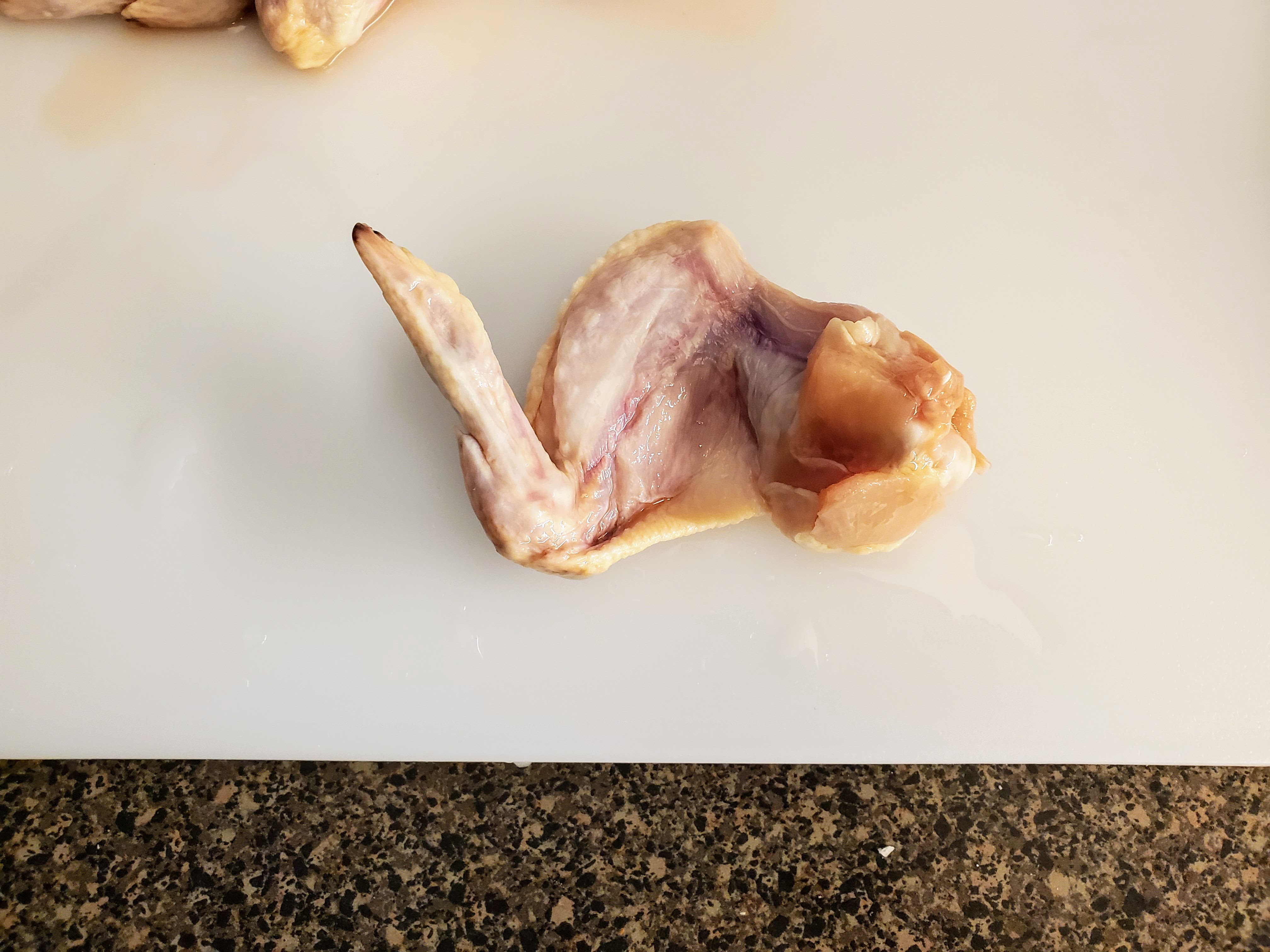
Grab the wing, and squeeze it together, which will open up that joint.
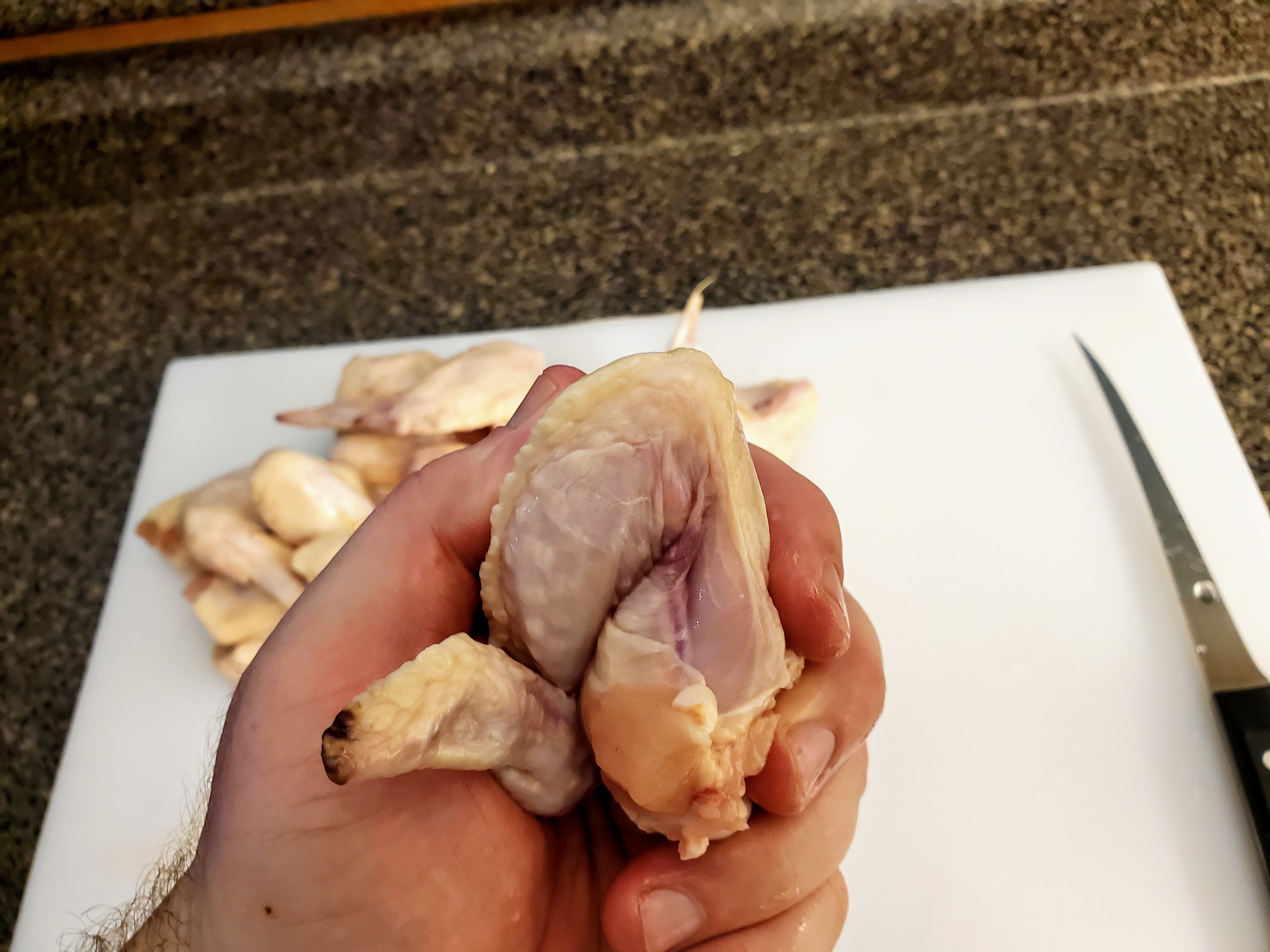
With your knife, carefully make an incision, and work around the joint until you have a little v-notch:
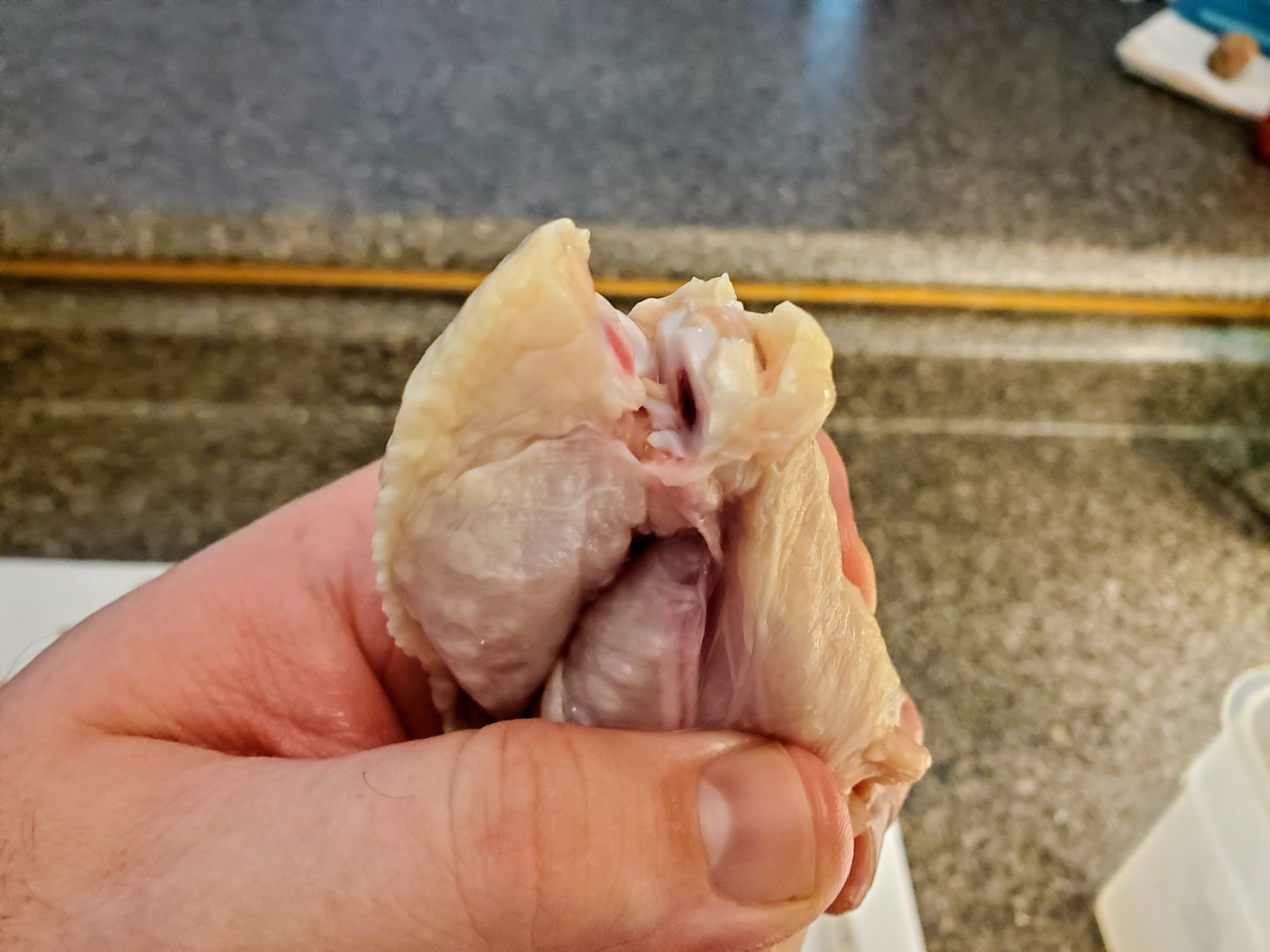
From here, put the wing back down on the cutting board and finish the cut.
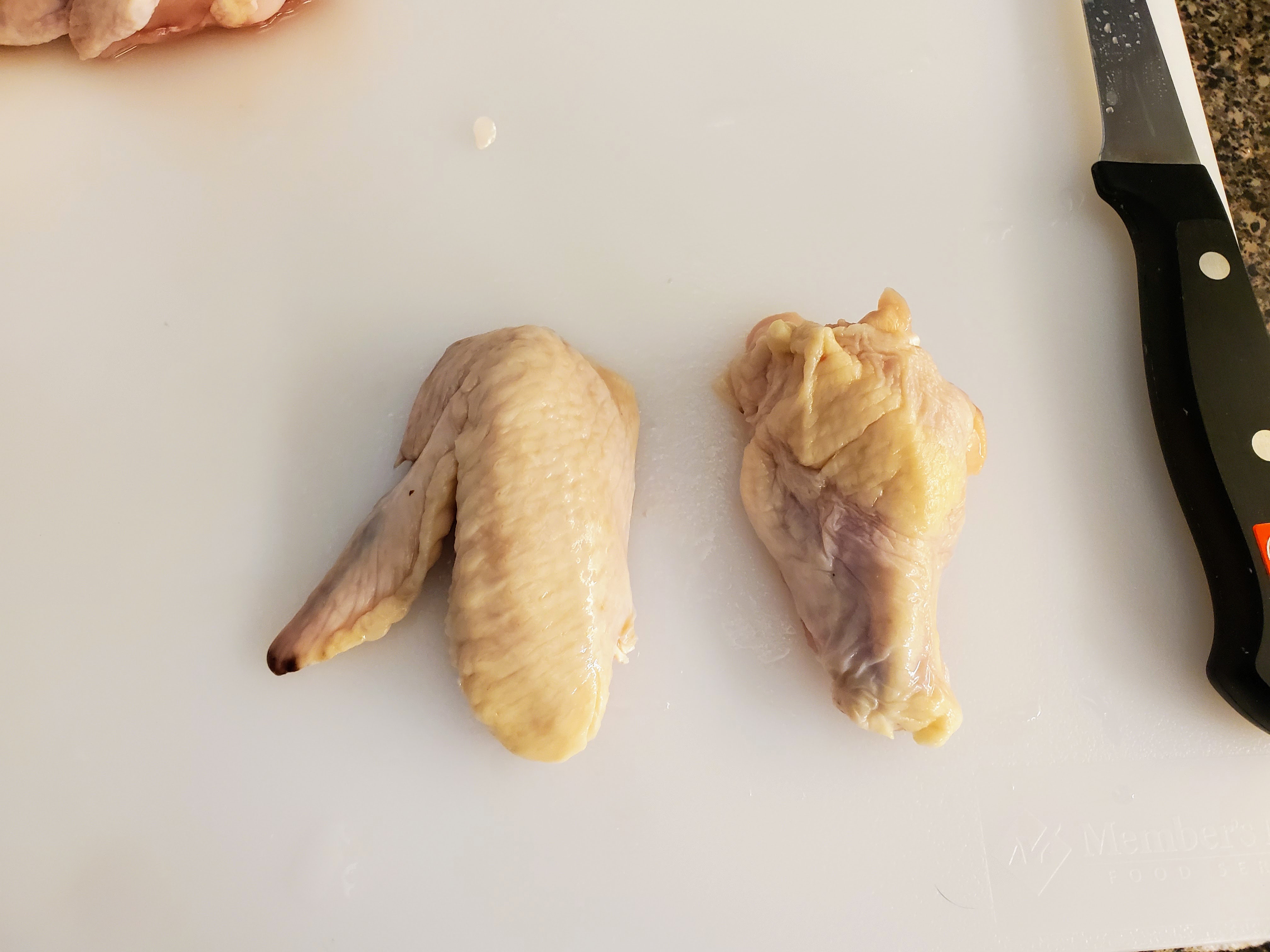
With a little practice, this will only take about ten seconds, and you’re left with really high-quality wings with no jutting or broken bones. If you want, you can take the wingtip off, and if I’m making these in the oven, I usually do. But if we’re roasting them outside (like today), I leave them on. Why? Well, inside I may have limited space on the sheet pan and the little wingtips can get in the way. But there’s another reason, which we’ll get to in a bit.
Next up: the brine. This is the first place we’re veering away from the restaurant method, and it gives us the chance to really put the spurs to these in terms of extra flavor.
I’ve talked about brines before in our post about roasting a chicken, and much of that info applies here as well. The one difference? With wings, I never go beyond a 6% brine. Why? Well, they have a much different structural composition that a whole chicken, and the upshot is brine soaks in faster. Also, we are going to be tossing these in an admittedly salty sauce, so we don’t want to get to wild with the sodium.
So, for our 6% brine, we’ll get the wings in a plastic bag inside some leak-proof backup (in this case a Cambro) and zero out the scale:
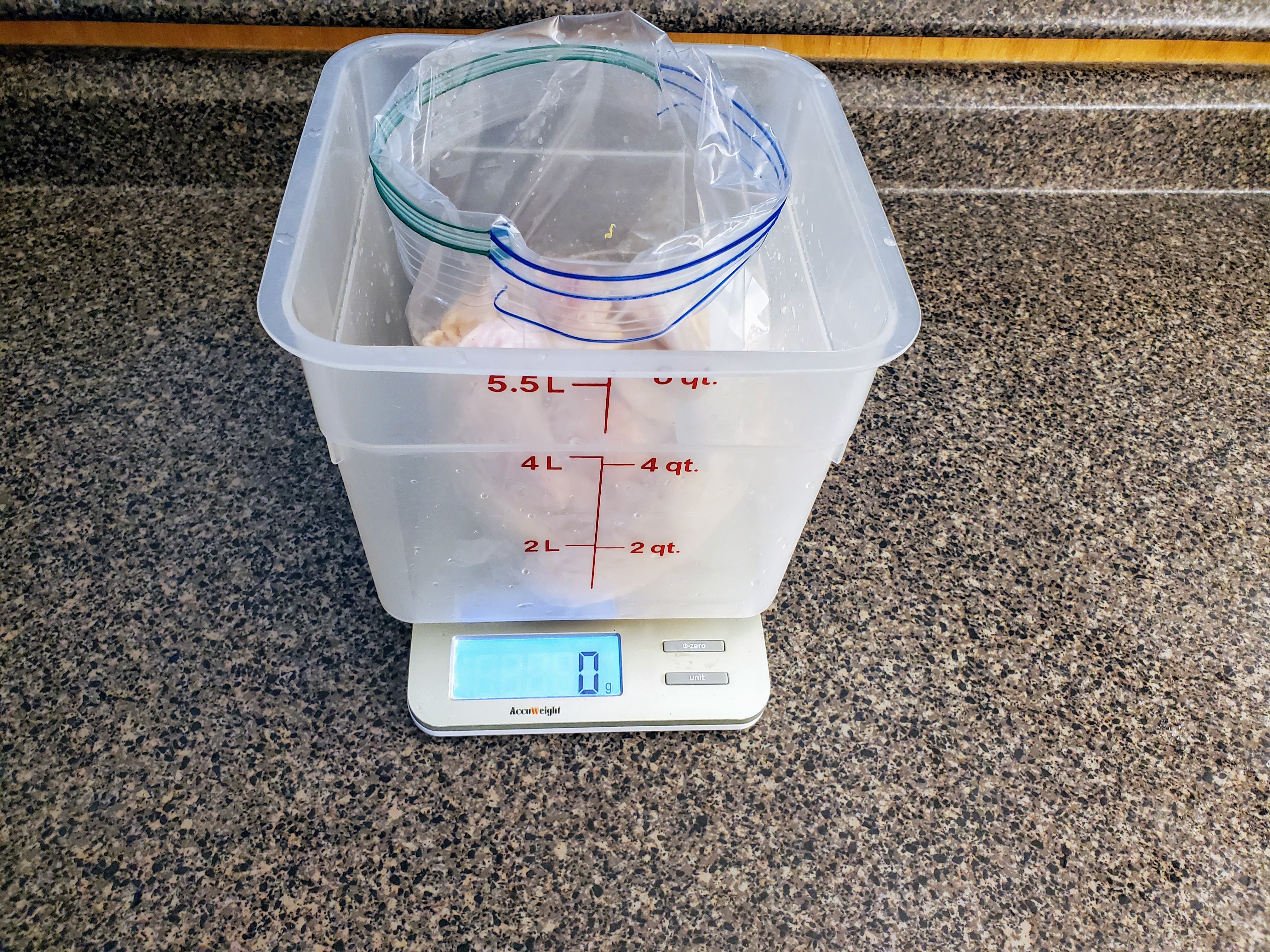
Then, we’ll cover the wings in water, and weigh again so we have the weight of the water only:

There. 6% of that is about 70 grams, so in goes 70g of pickling salt, and the same weight of brown sugar. Why pickling salt? Well, it’s designed to dissolve in cold water, but really you can use whatever you have on hand. The beauty of weighing the ingredients means you can use whatever you want without worrying about volumetric changes (e.g. a teaspoon of kosher salt is actually LESS salt than a teaspoon of pickling salt, just because the latter settles more completely due to its shape).
Anyway, that’s almost it for the brine, except it isn’t. It would be a real shame to waste all that osmotic action on just salt and sugar, so I’m adding a little bit of dried sage since we are going for classic buffalo here. Were we doing jerk, I’d consider cloves or allspice. You get the idea.
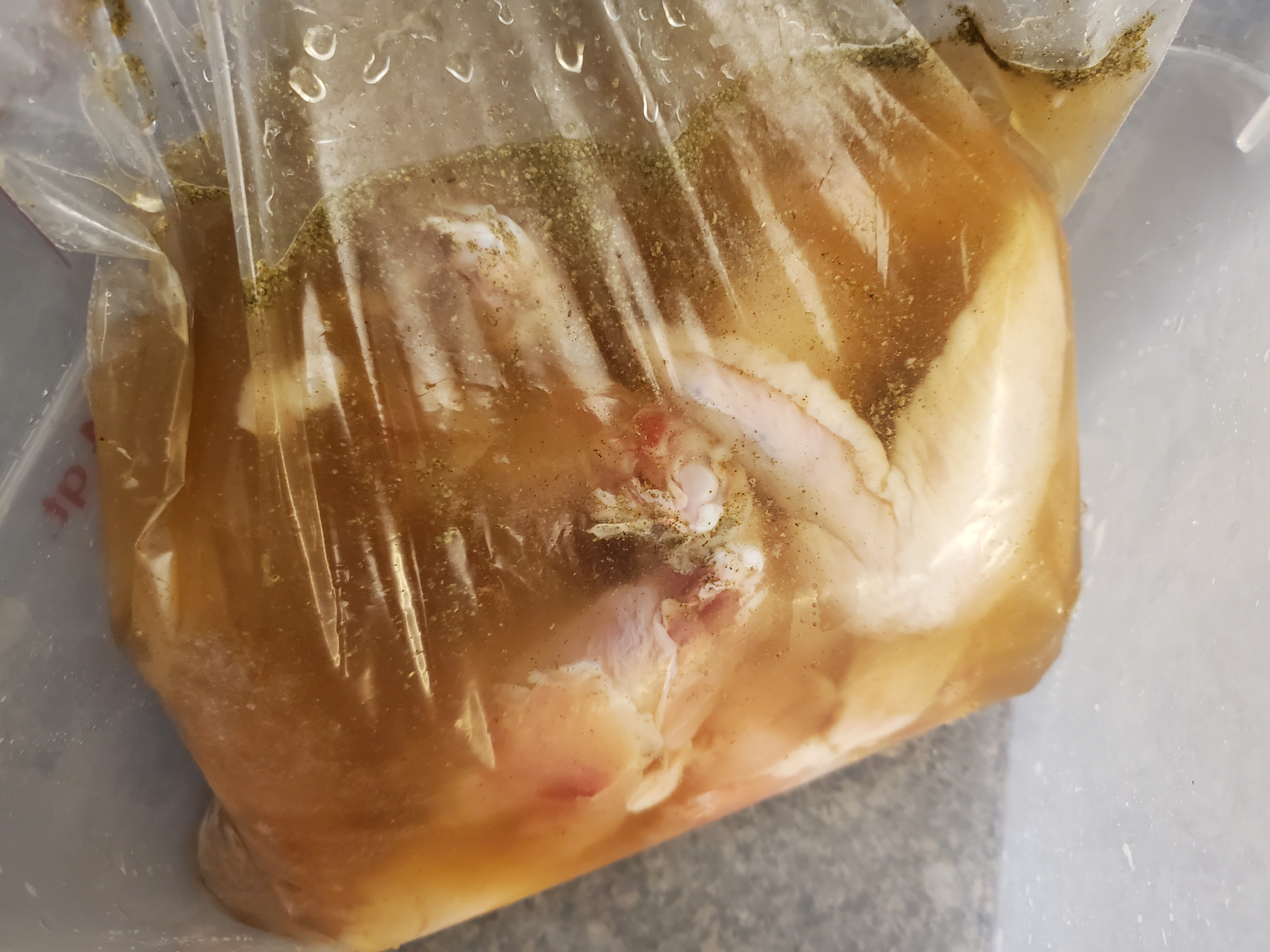
Side note: for a period of time, I tried to “brine-in” spicy heat, and discovered some interesting things along the way. First, you can’t. For whatever reason, the capsaicin won’t travel along into the chicken. BUT, any peppers you throw in there will impart their secondary characteristics, the most notable being habanero peppers pass along a very fruity, floral taste that’s instantly recognizable. Just something to keep in mind.
From here, into the fridge for at least six hours, but they’ll also hold overnight if you want to do this the day before a BBQ or whatever.
While that’s happening, we can make up our sauces. First, classic buffalo.
This is the second big diversion from restaurant wings: there is no butter or added fat in my buffalo sauce. Rather, it’s a base of hot sauce modified with the Worcestershire sauce, and then spiked to desired heat level with cayenne and/or jalapeno juice. All the ingredients go into a sauce pot, it’s adjusted for heat-level, and warmed before tossing with the wings. Simple.
BUT… there are a couple of considerations here. First, I mentioned Frank’s Red Hot by name because it really does make a difference. It’s not my favorite hot sauce, in fact it’s probably not even in my top ten, but as a base for buffalo wings, you really can’t beat it. So, go name-brand.
Second, not all “heats” are created equal. There’s a difference between front-of-the-mouth tongue sting (like from a fresh hot pepper) and slow, creeping burn, like a good Thai curry. I like a combination of both, leaning more toward the front-of-the-mouth experience.
How do we get there? Well, in my experience, the jalapeno juice (or a fresh pepper with seeds and membrane intact) will get you there nicely. Cayenne, on the other hand, tends to be the slower, creeping heat. So balance them out. Also, remember, you’re going to be eating this on hot wings, not as a soup, so you want it pretty aggressive. That said, you’re also (in theory) going to be eating more than one wing, so… use your head. Just a few things to consider, that’s all.

Next sauce: blue cheese dressing. This is another departure from tradition, which typically involved a predominantly mayo base with microscopic crumbles of blue cheese, and little (if any) other seasoning. I, on the other hand, like to use mostly sour cream, and find that the garlic and onion powders really round out the funk from the cheese (which I also like to leave in pea-sized crumbles for texture).
Like the buffalo, this is pretty easy: everyone in the bowl, mix, and adjust for taste. One thing I will mention is that I always thin it out a little, and I only use water for this (about a tablespoon at a time until I get things where I want them). I’ve used buttermilk in the past, and found the acidity just throws everything off, particularly since we already have a acid-heavy wing. I’ve also tried regular milk, but found it just deadens the flavor like a handful of sand or something. So, water it is.
What’s that? One more sauce? Something non-traditional? Oh, fine. Get out the gochujang.
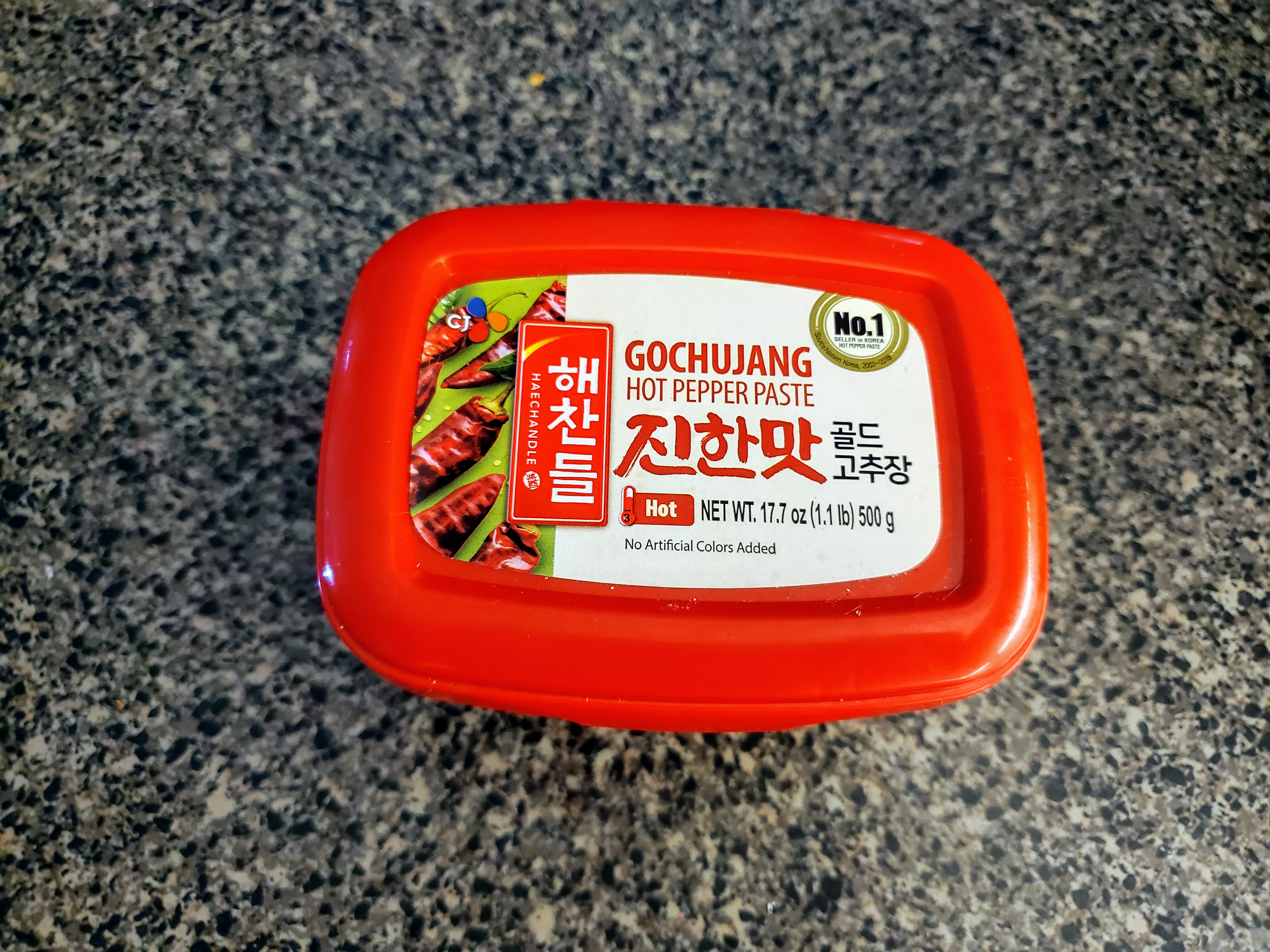
What is it? Well, it’s kind of like trying to describe the flavor of Worcestershire. It’s a Korean ingredient that’s spicy, salty, tangy, and fermented-funky, in that order. It’s cheap, potent, widely available, and keeps forever, so I always have some around.
This sauce, which I have yet to name, we’ll need two tablespoons of the gochujang, a quarter cup of soy sauce, one tablespoon of honey, and a teaspoon of toasted sesame oil. Whisk to combine, and set aside. The result is a toasty, spicy, salty, slightly sweet concoction that puts me in mind of like… evil General Tso’s… or something.
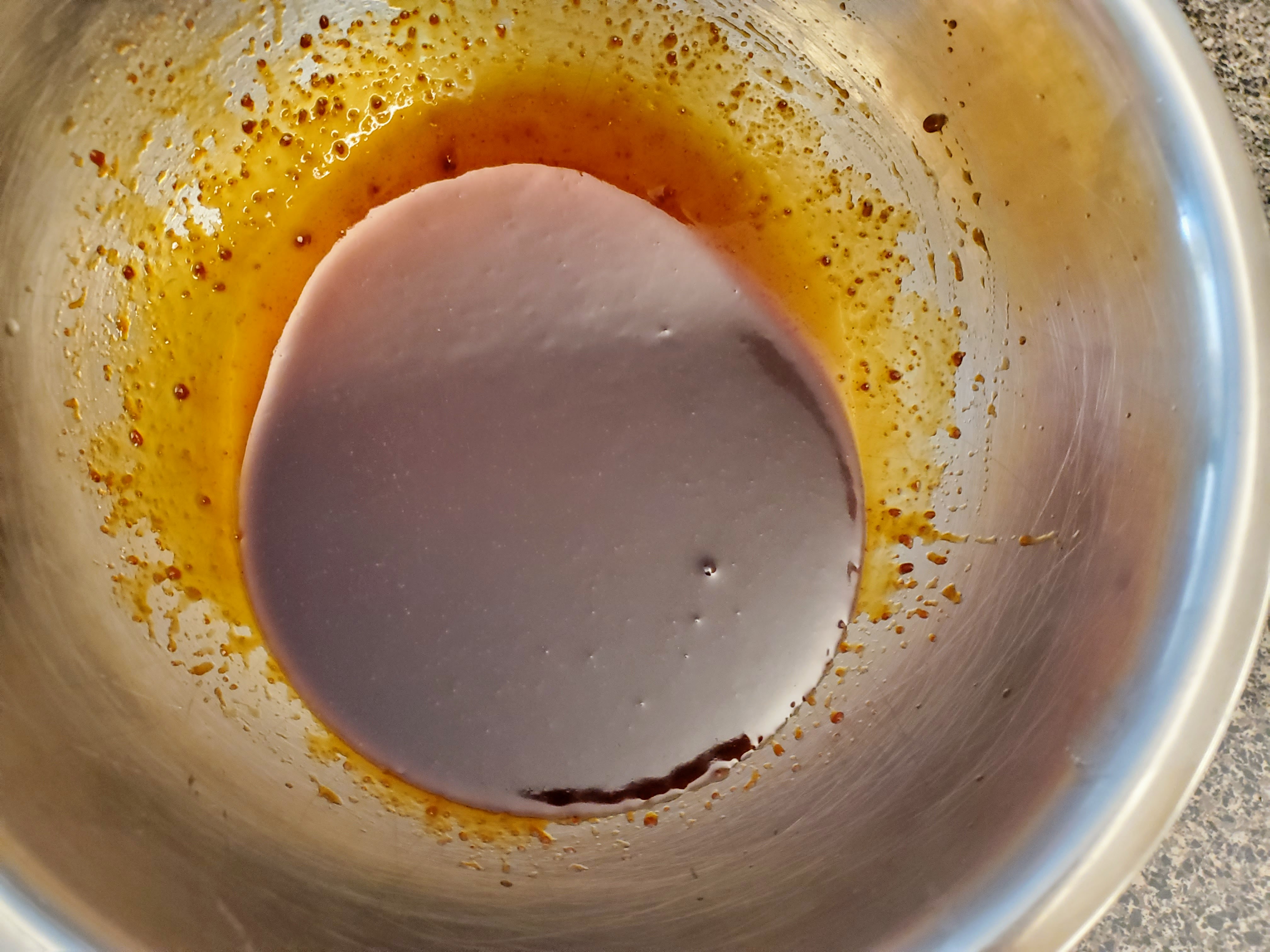
On to the easy part, cooking the wings. At least an hour before cooking, get them out of the brine and rinse it off. It’s potent stuff, delicious in the meat but too strong for the surface. Once they’re rinsed, pat them dry and stick in the fridge until cooking time.

The important thing here (besides the rinse) is making sure they get dry before they hit the fire, otherwise we’ll have soggy, steamed skin, and nobody wants that.
So, as to the actual cooking, I’ve said a few times now that we’re roasting these over coals, but what the hell does that mean? It means I’m using an outdoor cooker (in this case my Weber Smokey Mountain, recently discussed at length in our Poor Man’s Brisket post), a hot bed of direct-fire coals (we’ll get to that), and I’m controlling the heat by elevating the wings up off the surface of the fire.
This is going to give us crispy skin, and although we aren’t using wood and we’re not cooking at “smoking temps,” the fat from these will render out, drip onto the hot coals, sizzle and flame and smoke back up, giving the chicken a flavor it can only get cooked over open fire. This is ALSO the second reason I leave the wingtips on the flats when cooking outside: they are a repository of fat and flavor that’s going to help season the whole shebang.
So, let’s build that fire.
The good news is this is the easiest setup we’ve used so far, compared to the “ring of fire” configuration we used for our injected and grilled chicken, or the snake/fuse method we’ve discussed in our pulled pork and PMB discussions. We just need an even bed of coals all the way across:

This gets ignited evenly across the top. I use my chimney starter with a full load of coals:
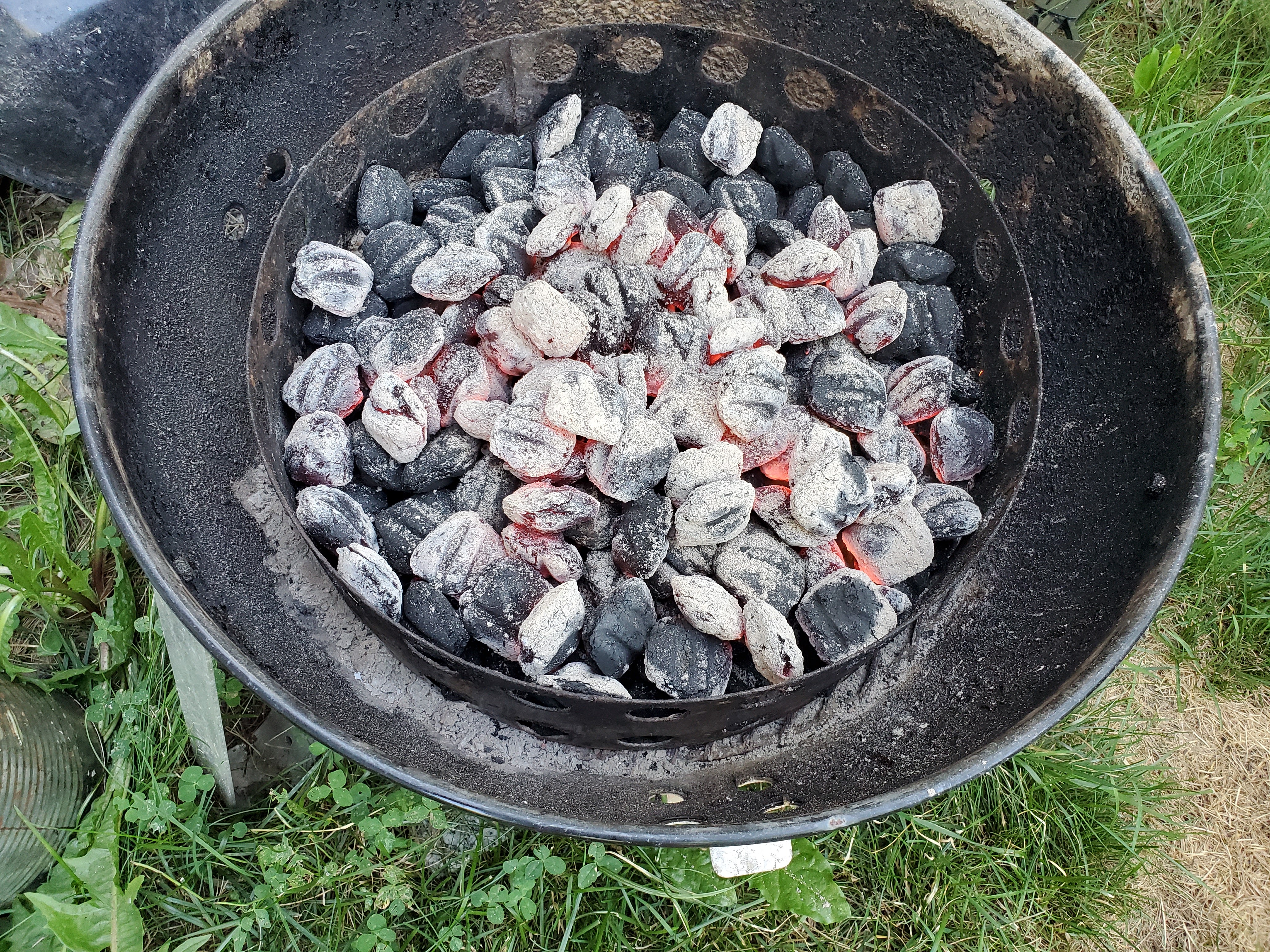
Next, we load up our chicken:

So, yes, you can absolutely do this on a normal charcoal grill, just make sure your coal bed is only one-coal deep, and keep an eye on the wings as you’ll need to turn them twice as often to prevent burning. But for this setup, we’re going to cover with the dome and come back in fifteen (15) minutes to flip.
Aaaaaand here we are:

You can see they’ve started to take on a little color from the chicken-fat smoke, and we need to flip:
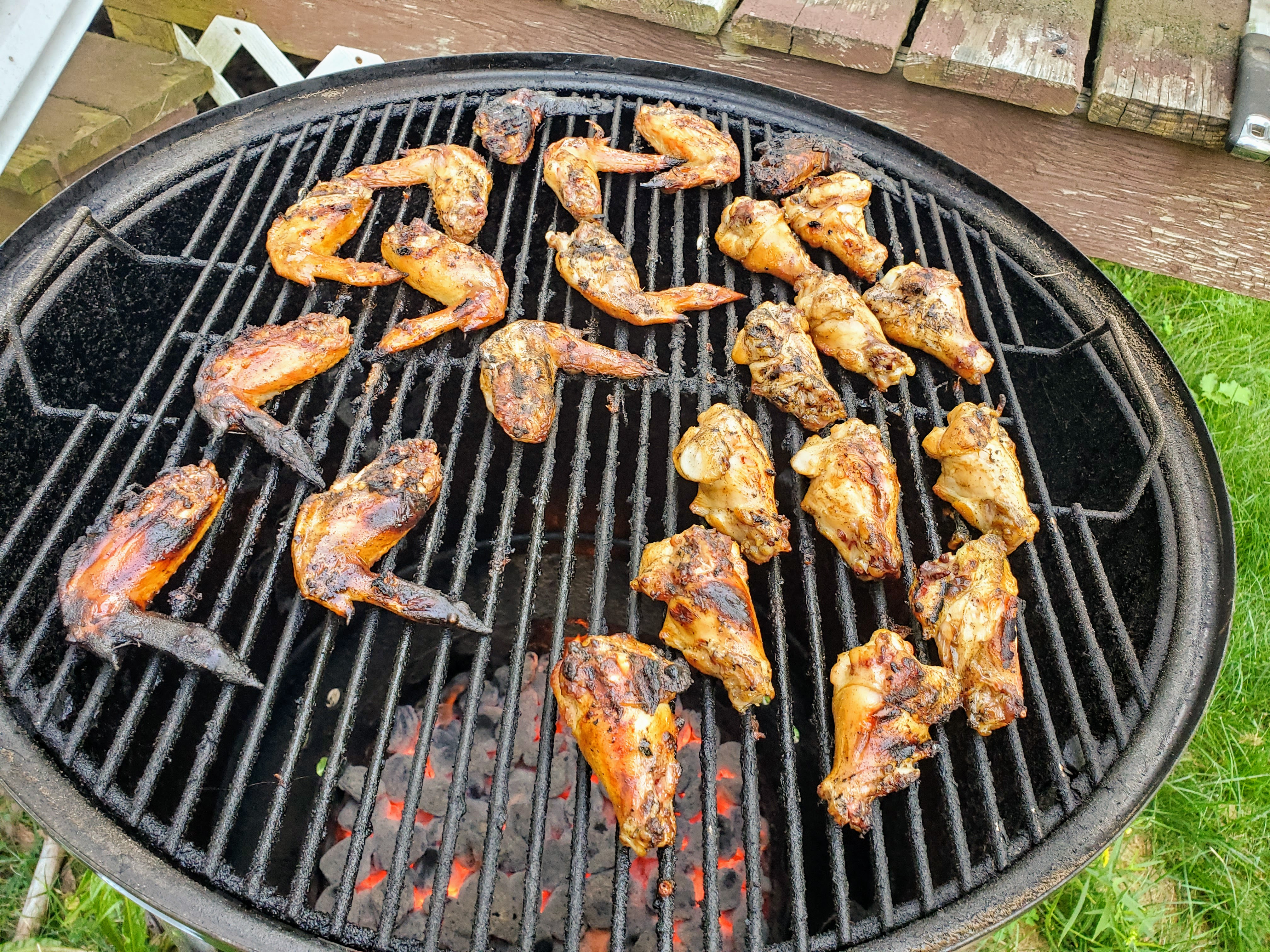
The undersides (now the top sides) are nicely charred, which is what we want for our skin as well

Cover back on, and check in after another fifteen (15) minutes.
At this point, they come off and hit the sauce. We’re doing the flats buffalo-style:

And the drumettes in our gochujang sauce:

At this point, you have a decision to make. These are technically done, and can be served just like this. Or….
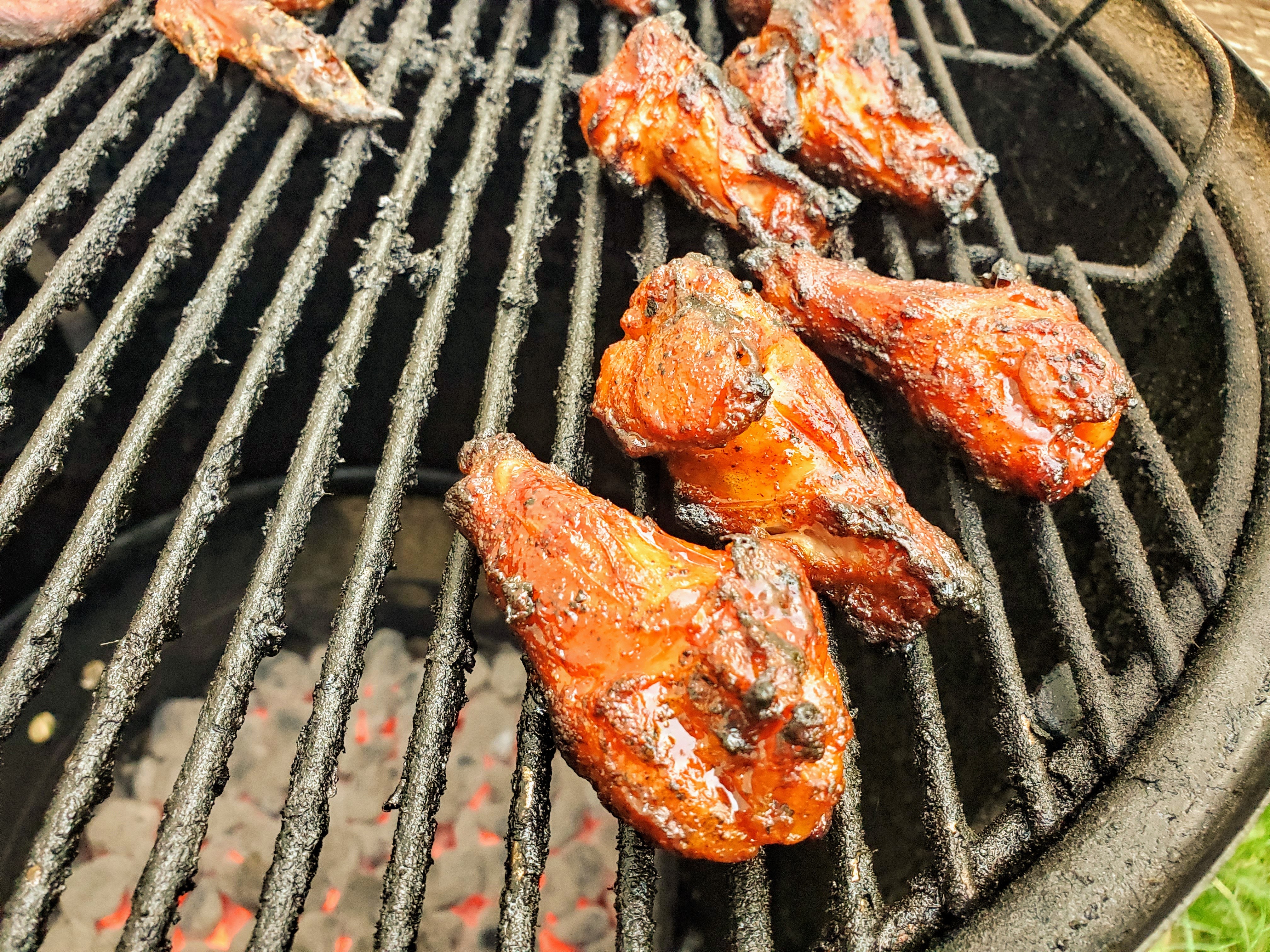
You can put them back on the pit for another five minutes to let the sauce set:

Then toss them one more time, plate and serve:
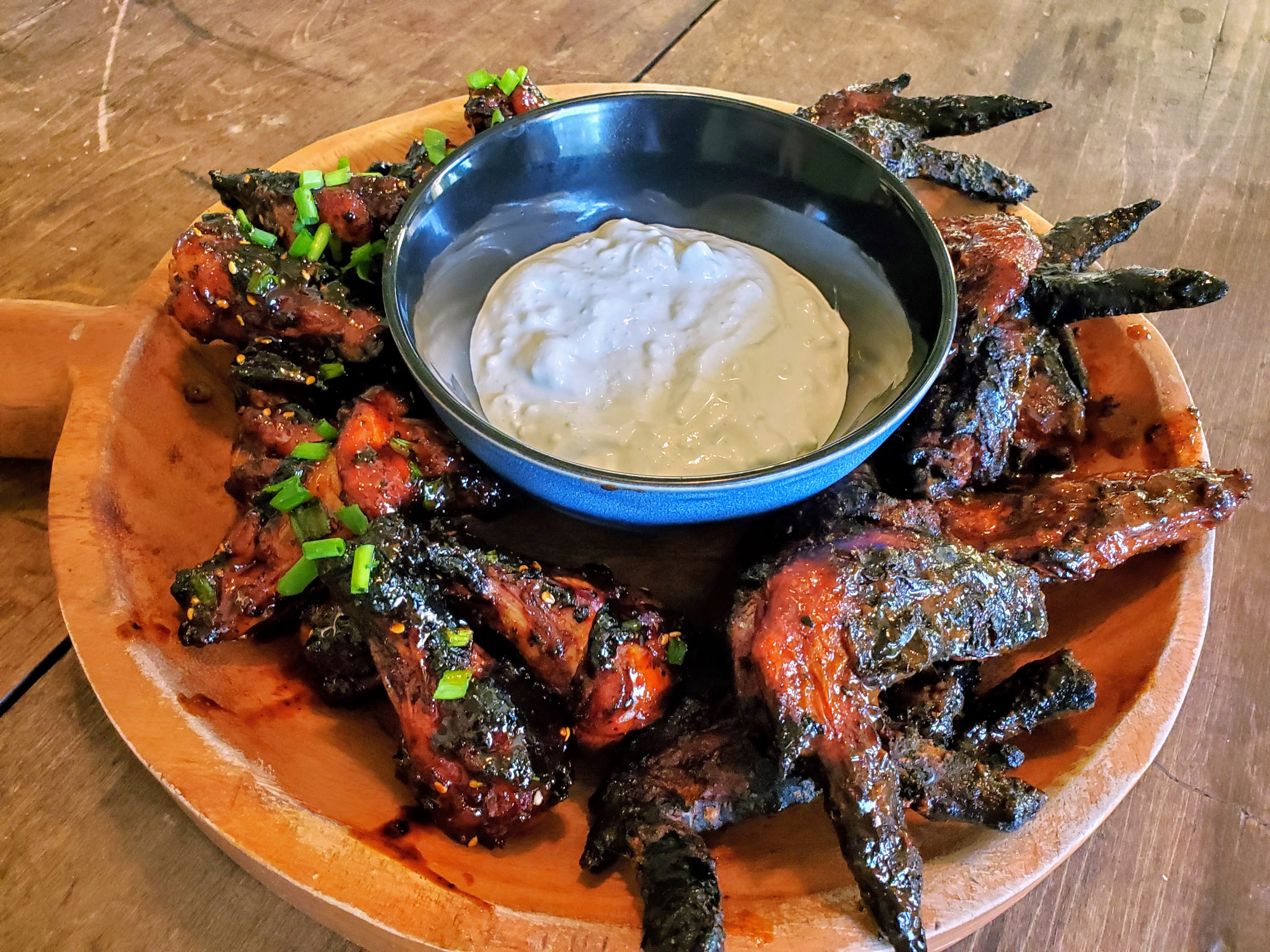
For the gochujang wings, we tossed them with some sesame seeds and topped with a little green onion.

And there it is. We may not have school, or bars, or restaurants, or the fair, or football, but we can still have football snacks, and we still have the great weather to cook outside. So, grab some wings, fire up your grill and cheer for a squirrel chasing another squirrel in the yard. Go slightly smaller squirrel!

